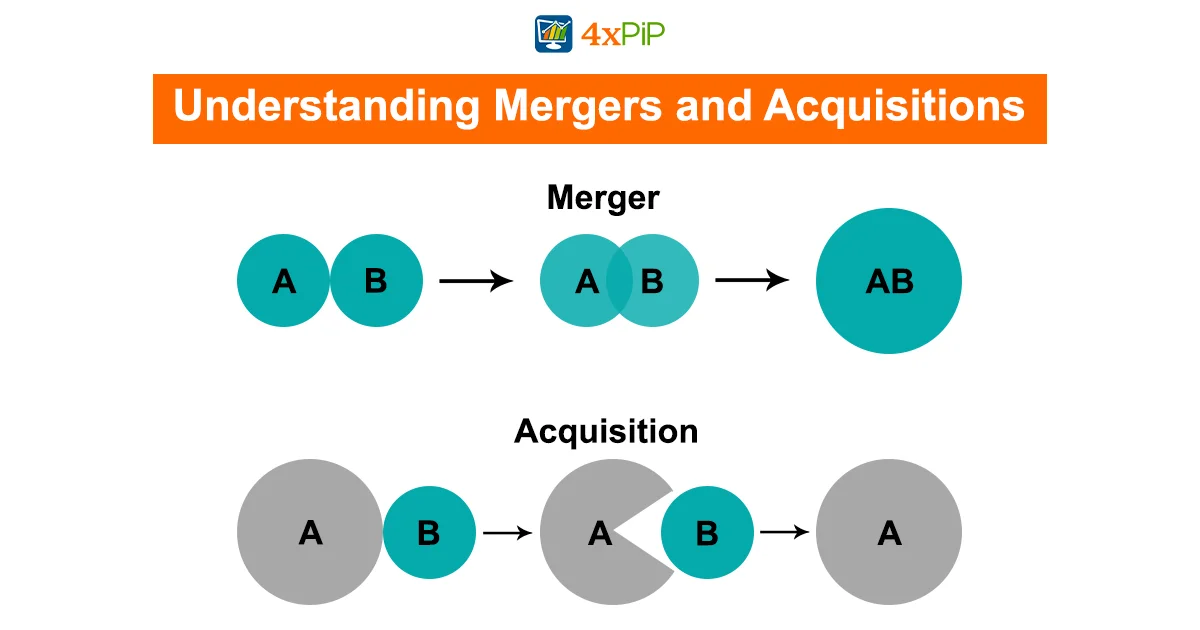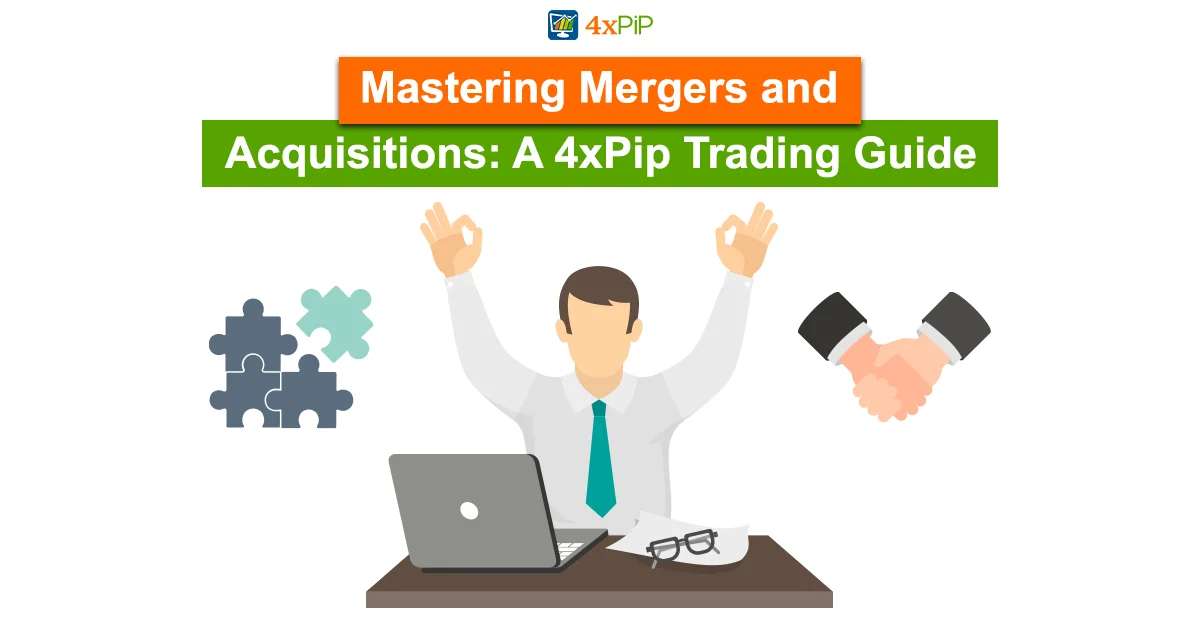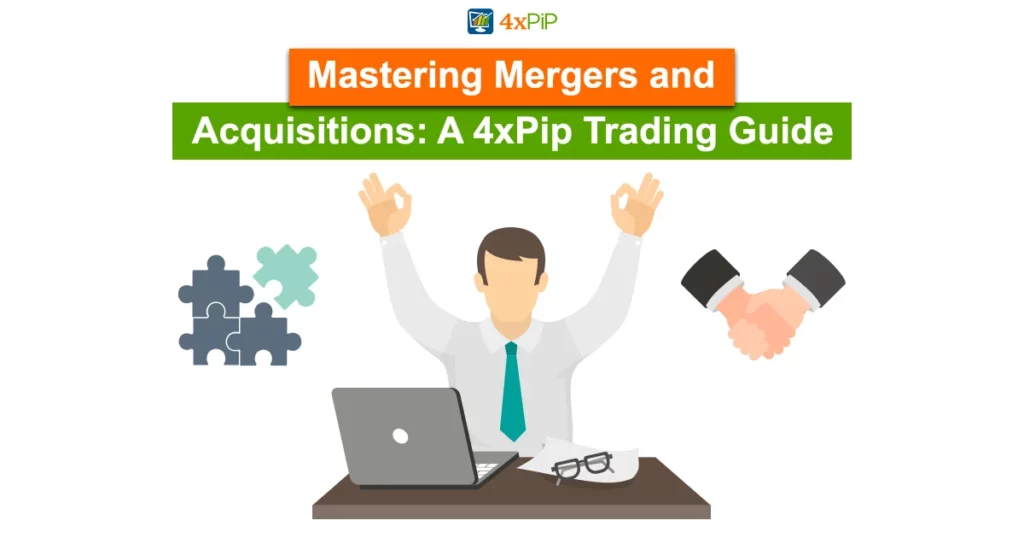In this comprehensive guide brought to you by 4xPip, we delve into the dynamic realm of Mergers and Acquisitions (M&A), demystifying the intricacies for both beginners and seasoned traders. If you’re eager to navigate the markets successfully, 4xPip is your go-to resource. Don’t miss the chance to explore our expert insights and advanced trading tools, including auto-trading robots and indicators at 4xpip. For personalized guidance, reach out to our experts at [email protected].
Understanding Mergers and Acquisitions:

The terms “mergers” and “acquisitions” are often used interchangeably, but they carry distinct meanings. In an acquisition, one company purchases another outright, establishing itself as the new owner. On the flip side, a merger involves two companies of similar size joining forces to create a new entity. For instance, the merger of Daimler-Benz and Chrysler birthed DaimlerChrysler, marking the end of both companies as separate entities.
When both CEOs agree that joining forces benefits their companies, a purchase deal can also be labeled as a merger. However, in hostile takeovers, where the target company resists the acquisition, it’s unequivocally regarded as an acquisition. 4xPip recommends seeking advice from our experts, especially if you’re new to trading. Explore our range of auto trading tools and robots on 4xpip.
Types of Mergers and Acquisitions:

M&A activities encompass various transactions, each with its unique characteristics. Mergers involve the approval of boards of directors and shareholders, leading to the creation of a new entity. An illustrative example is the merger between Digital Equipment Corporation and Compaq in 1998, later merging with Hewlett-Packard in 2002.
Acquisitions see one company obtaining the majority stake in another without altering its name or structure. The 2004 acquisition of John Hancock Financial Services by Manulife Financial Corporation is a prime example.
Consolidations create a new company by combining core businesses and shedding old structures. Citicorp and Travelers Insurance Group’s 1998 consolidation resulting in Citigroup is a noteworthy instance.
Tender Offers involve one company directly offering to purchase the outstanding stock of another at a specific price. Johnson & Johnson’s 2008 tender offer to acquire Omrix Biopharmaceuticals for $438 million is a case in point.
For comprehensive insights into these transactions, 4xPip recommends exploring our range of tools and products on 4xpip for successful trading strategies.
How Mergers Are Structured:
The structuring of mergers varies based on the relationship between the involved companies. Additionally, different types include horizontal mergers between direct competitors; moreover, there are vertical mergers involving customers and suppliers. Furthermore, conglomerate mergers, where companies have no common business areas, may also occur.
Understanding the financing methods is crucial. Additionally, Purchase Mergers occur when one company buys another, often with cash or debt instruments. Furthermore, Consolidation Mergers form a new company, maintaining the tax terms of a purchase merger. For a deeper understanding, consult 4xPip’s experts. Moreover, explore our trading tools at 4xpip.
How Acquisitions Are Financed:
Acquisitions can be financed through cash, stock, assumption of debt, or a combination. Smaller deals may involve one company acquiring all assets of another, resulting in the latter becoming a shell. Another method, a reverse merger, allows a private company to become publicly listed quickly. Explore our range of tools and products at 4xpip for successful trading strategies tailored for you.
How Mergers and Acquisitions Are Valued:
Valuing companies in an M&A deal involves considering various metrics. The Price-to-Earnings Ratio (P/E Ratio), Enterprise-Value-to-Sales Ratio (EV/Sales), and Discounted Cash Flow (DCF) analysis are crucial tools. Additionally, some acquisitions are based on the replacement cost, a method of pricing assets by summing equipment and staffing costs. While time-consuming, good management is invaluable, and 4xPip encourages exploring these valuation methods for successful trading strategies.
Conclusion:
Mastering the world of Mergers and Acquisitions is a journey worth taking. 4xPip, your trusted partner in trading, stands ready to guide you with expert insights and advanced tools. Visit 4xpip for a closer look at our products and don’t hesitate to contact us at [email protected] for personalized assistance. Happy trading!





